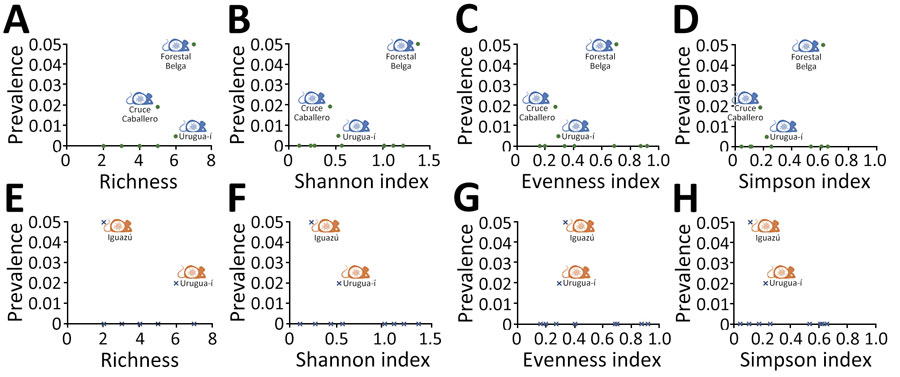Volume 30, Number 7—July 2024
Dispatch
Orthohantaviruses in Misiones Province, Northeastern Argentina
Figure 2

Figure 2. Orthohantavirus seroprevalence in Akodon affinis montensis mice (green dots) and in Oligoryzomys sp. rodents (blue crosses) as a function of richness and Shannon-Wiener, evenness, and Simpson indices in study of orthohantavirus in Misiones Province, northeastern Argentina. Mouse icons indicate presence of seropositive A. aff. montensis (in blue) and Oligoryzomys sp. (in orange) rodents.
Page created: May 10, 2024
Page updated: June 22, 2024
Page reviewed: June 22, 2024
The conclusions, findings, and opinions expressed by authors contributing to this journal do not necessarily reflect the official position of the U.S. Department of Health and Human Services, the Public Health Service, the Centers for Disease Control and Prevention, or the authors' affiliated institutions. Use of trade names is for identification only and does not imply endorsement by any of the groups named above.